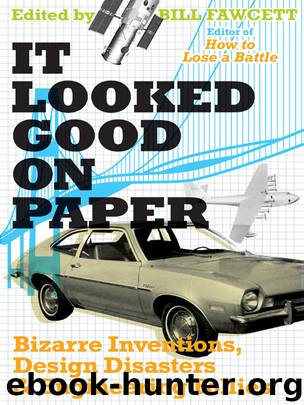It Looked Good on Paper by Bill Fawcett

Author:Bill Fawcett
Language: eng
Format: epub
Publisher: HarperCollins
When Push Comes to Budget Crunch
It seems axiomatic in the Pentagon that the longer a weapons program takes, the more it will cost in the end.
The Comanche program reached $39 billion total. The Congressional Budget office was estimating in 1997 that the helicopter would have a flyaway price of $26 million, well above the $7.5 million originally considered pricey. Upgrading the existing fleet of OH-58s would be a bargain at $1.3 billion over five years.
This took place as the Army was struggling to maintain its 10-division strength in 1996-97. The money needed to do that was being consumed by various weapons programs. Wouldn’t it make sense to kill the Comanche, just to free up the money?
The Army answered with a study that concluded that the Comanche had a higher likelihood of survivability compared to the Kiowa.
That’s on the battlefield.
But during peacetime, wars are fought over budgets, not terrain.
The Comanche was flying around with a big bulls-eye drawn on it in the shape of a dollar sign.
Development continued through 1997, but the weight problem could not be licked. The Comanche was now up to 8,943 pounds empty—that is, without fuel, ammo, or crew. The budget dollars needed to put the chopper on a diet could not be found. The RAH-66 would go on a development hiatus instead, being grounded for the next 18 months to save money.
Another money-saving move was to push purchase dates back. First it was delayed from 2001 to 2003, then back further to 2006. The longer this program took, the more likely it would be overtaken by events. The General Accounting Office took one look at the need for a recon helicopter and realized it could get the same job done for $4.5 billion if the Army used unmanned reconnaissance vehicles (UAVs). Firepower would be lacking, but the recon capability would be better and the vehicles could be lost without losing aircrew. But the Army was not willing to surrender the program just yet.
The Comanche resumed testing in 1999. Prototype number two took to the air. It was going to be the test bed for the Mission Equipment Package (MEP)—the array of sensors and weapons that would give the Comanche its killing power. Budget questions still dogged the program. There simply was not enough money to both pay for the RAH-66 and keep modernizing existing helicopters.
Modernization was always the cheaper option, especially since it could keep the OH-58 flying until 2025, again undermining the need for the Comanche. In terms of operating costs, a key metric of the peacetime military, the OH-58 only cost $1,100 per flight hour compared to the $2,200 to $2,400 for the AH-64. If the Army purchased the AH-64D upgrade for its AH-64As, it would get the Comanche’s capabilities (without stealth) for a much lower cost and still perform the recon mission.
For the RAH-66, the challenge was maintaining justification for an expensive helicopter whose job could be done by cheaper, existing models. The Army didn’t see it that way. “We need to get
Download
This site does not store any files on its server. We only index and link to content provided by other sites. Please contact the content providers to delete copyright contents if any and email us, we'll remove relevant links or contents immediately.
| Automotive | Engineering |
| Transportation |
Whiskies Galore by Ian Buxton(41712)
Introduction to Aircraft Design (Cambridge Aerospace Series) by John P. Fielding(33011)
Small Unmanned Fixed-wing Aircraft Design by Andrew J. Keane Andras Sobester James P. Scanlan & András Sóbester & James P. Scanlan(32678)
Craft Beer for the Homebrewer by Michael Agnew(18076)
Turbulence by E. J. Noyes(7888)
The Complete Stick Figure Physics Tutorials by Allen Sarah(7258)
Kaplan MCAT General Chemistry Review by Kaplan(6814)
The Thirst by Nesbo Jo(6748)
Bad Blood by John Carreyrou(6468)
Modelling of Convective Heat and Mass Transfer in Rotating Flows by Igor V. Shevchuk(6349)
Learning SQL by Alan Beaulieu(6152)
Weapons of Math Destruction by Cathy O'Neil(6077)
Man-made Catastrophes and Risk Information Concealment by Dmitry Chernov & Didier Sornette(5870)
Digital Minimalism by Cal Newport;(5576)
Life 3.0: Being Human in the Age of Artificial Intelligence by Tegmark Max(5398)
iGen by Jean M. Twenge(5298)
Secrets of Antigravity Propulsion: Tesla, UFOs, and Classified Aerospace Technology by Ph.D. Paul A. Laviolette(5232)
Design of Trajectory Optimization Approach for Space Maneuver Vehicle Skip Entry Problems by Runqi Chai & Al Savvaris & Antonios Tsourdos & Senchun Chai(4949)
Electronic Devices & Circuits by Jacob Millman & Christos C. Halkias(4859)
